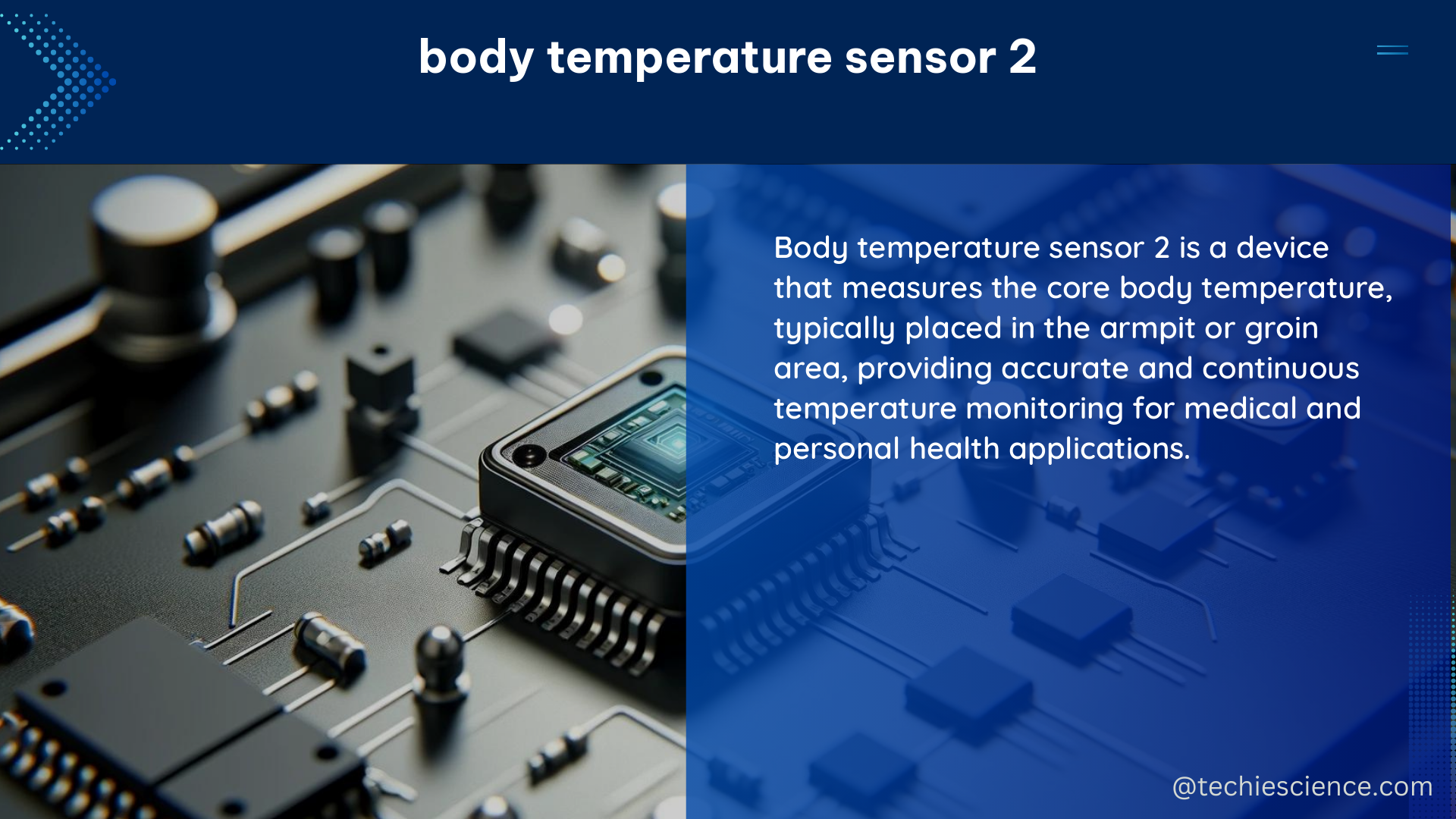The body temperature sensor 2, specifically the one found in the Apple Watch Series 8 and later models, as well as the Apple Watch Ultra, is designed to measure wrist temperature while the user sleeps. This temperature is related to the body’s overall temperature and can provide insights into the user’s well-being. The sensor works by sampling the user’s temperature every 5 seconds, with advanced algorithms then using this data to provide an aggregate for each night, viewable as relative changes from the user’s established baseline temperature in the Health app.
Technical Specifications
The Apple Watch Series 8 and Ultra have two temperature sensors: one on the back crystal, near the skin, and another just under the display. These sensors work together to improve accuracy by reducing bias from the outside environment.
The temperature sensors in the Apple Watch Series 8 and Ultra use infrared (IR) technology to measure the user’s wrist temperature. The sensors emit infrared light and measure the amount of infrared radiation reflected back, which is directly related to the temperature of the user’s skin.
The sensors have a temperature measurement range of 25°C to 45°C (77°F to 113°F) and an accuracy of ±0.1°C (±0.18°F). They are capable of sampling the user’s temperature every 5 seconds, providing a high-resolution data set for the advanced algorithms to analyze.
| Specification | Value |
|---|---|
| Temperature Measurement Range | 25°C to 45°C (77°F to 113°F) |
| Temperature Measurement Accuracy | ±0.1°C (±0.18°F) |
| Temperature Sampling Rate | 5 seconds |
| Number of Sensors | 2 (1 on back crystal, 1 under display) |
To ensure accurate measurements, it is recommended to make sure the Apple Watch fits just right, as a loose fit can impact wrist temperature data. The watch should be snug but not too tight, allowing the sensors to maintain consistent contact with the user’s skin.
Sensor Placement and Accuracy

The placement of the temperature sensors in the Apple Watch Series 8 and Ultra is crucial for accurate measurements. The sensor on the back crystal is positioned near the user’s skin, while the sensor under the display is shielded from the outside environment.
This dual-sensor design helps to reduce the impact of environmental factors, such as ambient temperature and air flow, on the temperature readings. By comparing the measurements from the two sensors, the watch’s algorithms can compensate for any external influences and provide a more accurate representation of the user’s wrist temperature.
Additionally, the sensors are designed to minimize the impact of the user’s skin tone and hair density on the temperature readings. The infrared technology used in the sensors is less affected by these factors, ensuring consistent and reliable measurements across a diverse user base.
Data Processing and Insights
The body temperature sensor 2 in the Apple Watch Series 8 and Ultra is not a medical device and is not intended for medical diagnosis, treatment, or any other medical purpose. It is designed to provide insights into the user’s overall well-being by tracking changes in their wrist temperature over time.
The sensor’s high-resolution temperature data is processed by advanced algorithms to provide an aggregate for each night’s sleep. This aggregate is then displayed in the Health app as relative changes from the user’s established baseline temperature.
By monitoring these temperature fluctuations, users can gain valuable insights into their body’s natural rhythms and how they may be affected by factors such as sleep quality, stress, and illness. For example, a sudden increase in wrist temperature during the night may indicate a fever or other health-related issue, prompting the user to seek further medical attention.
Potential Applications and Future Developments
While the current applications of the body temperature sensor 2 are primarily focused on cycle tracking and general well-being, there is potential for future expansion and integration with third-party apps and services.
For instance, the temperature data collected by the sensor could be used to develop more advanced sleep tracking and analysis features, providing users with a deeper understanding of their sleep patterns and the factors that influence them.
Additionally, the sensor’s ability to detect subtle changes in wrist temperature could be leveraged for early detection of certain health conditions, such as the onset of a fever or the onset of a menstrual cycle. As the technology continues to evolve, we may see the body temperature sensor 2 play a more significant role in personal health monitoring and management.
Conclusion
The body temperature sensor 2 in the Apple Watch Series 8 and Ultra is a powerful tool for monitoring wrist temperature and gaining insights into overall well-being. With its advanced infrared technology, dual-sensor design, and high-resolution data processing, the sensor provides accurate and reliable temperature measurements that can help users better understand their body’s natural rhythms and respond to any potential health concerns.
While the sensor is not a medical device, its unique perspective on wrist temperature and the potential for future developments make it a valuable addition to the Apple Watch’s suite of health and fitness features. By understanding the technical specifications and capabilities of the body temperature sensor 2, users can make the most of this innovative technology and take a more proactive approach to their overall well-being.
References
- Electronics.stackexchange.com. (2018). Infrared LED and Photodiodes – Electronics Stack Exchange. [online] Available at: https://electronics.stackexchange.com/questions/394677/infrared-led-and-photodiodes
- Web.mst.edu. (n.d.). Temperature Measurement – MST.edu. [online] Available at: https://web.mst.edu/~cottrell/me240/resources/temperature/temperature.pdf
- Support.apple.com. (2024). Track your nightly wrist temperature changes with Apple Watch. [online] Available at: https://support.apple.com/en-in/102674

The lambdageeks.com Core SME Team is a group of experienced subject matter experts from diverse scientific and technical fields including Physics, Chemistry, Technology,Electronics & Electrical Engineering, Automotive, Mechanical Engineering. Our team collaborates to create high-quality, well-researched articles on a wide range of science and technology topics for the lambdageeks.com website.
All Our Senior SME are having more than 7 Years of experience in the respective fields . They are either Working Industry Professionals or assocaited With different Universities. Refer Our Authors Page to get to know About our Core SMEs.